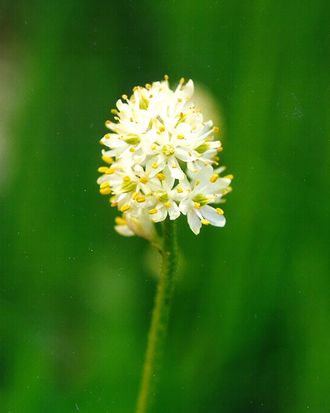
Alert!! It has come to my attention that a killer (of bugs) has been hiding in plain sight (“near urban centers of the Pacific Northwest,” per NPR) for, oh, only about 142 years. Apparently, botanists did not know until recently that the western false asphodel, or Triantha occidentalis, likes to eat flesh — even though, hello, insects must go missing around this delicate little flower all the time, and even though she’s been documented in the annals of flora since at least 1879.
Yet this plant turns out to be “unique” in its meat-consumption capabilities, according to a new study, published Monday in the Proceedings of the National Academy of Sciences. “We are all very excited,” lead author Qianshi Lin, formerly a doctoral student at the University of British Columbia (UBC), told Vice in an understatement. “It’s very rare to find a new origin of carnivory.” And in non-tropical locations such as Canada, to boot.
Congrats to this plant, but … who blew her cover?
Well: A team of botanists with the University of British Columbia, who were working on an entirely unrelated line of research near Vancouver, happened to notice the flower shared a genetic mutation with certain other carnivorous plants. This particular specimen also had a sticky stem, all the better for trapping little unsuspecting flies. Also important: The western false asphodel usually lives in bogs, meaning it has lots of access to sun and water, if not necessarily nutritious soil. The signs all pointed to insect-eater, a proclivity researchers confirmed by feeding it fruit flies via its stem, which — hell yeah — secretes enzymes that suck nutrients from prey.
Maybe this does not sound very climactic to you, but keep in mind: On most carnivorous plants, the trap part sits deliberately far away from any buds, so as to protect pollinators. But the adhesive hairs on the western false asphodel can snare only tiny little guys, so its anatomy would not seem to pose a risk to bees or anything big like that. With its previously unseen murder mechanism, T. occidentalis expands scientific notions about how killer plants might operate.
So, to sum up, wow! Another day, another “vivid reminder that other cryptic carnivores may yet remain to be discovered,” as the study puts it. Shivers.





